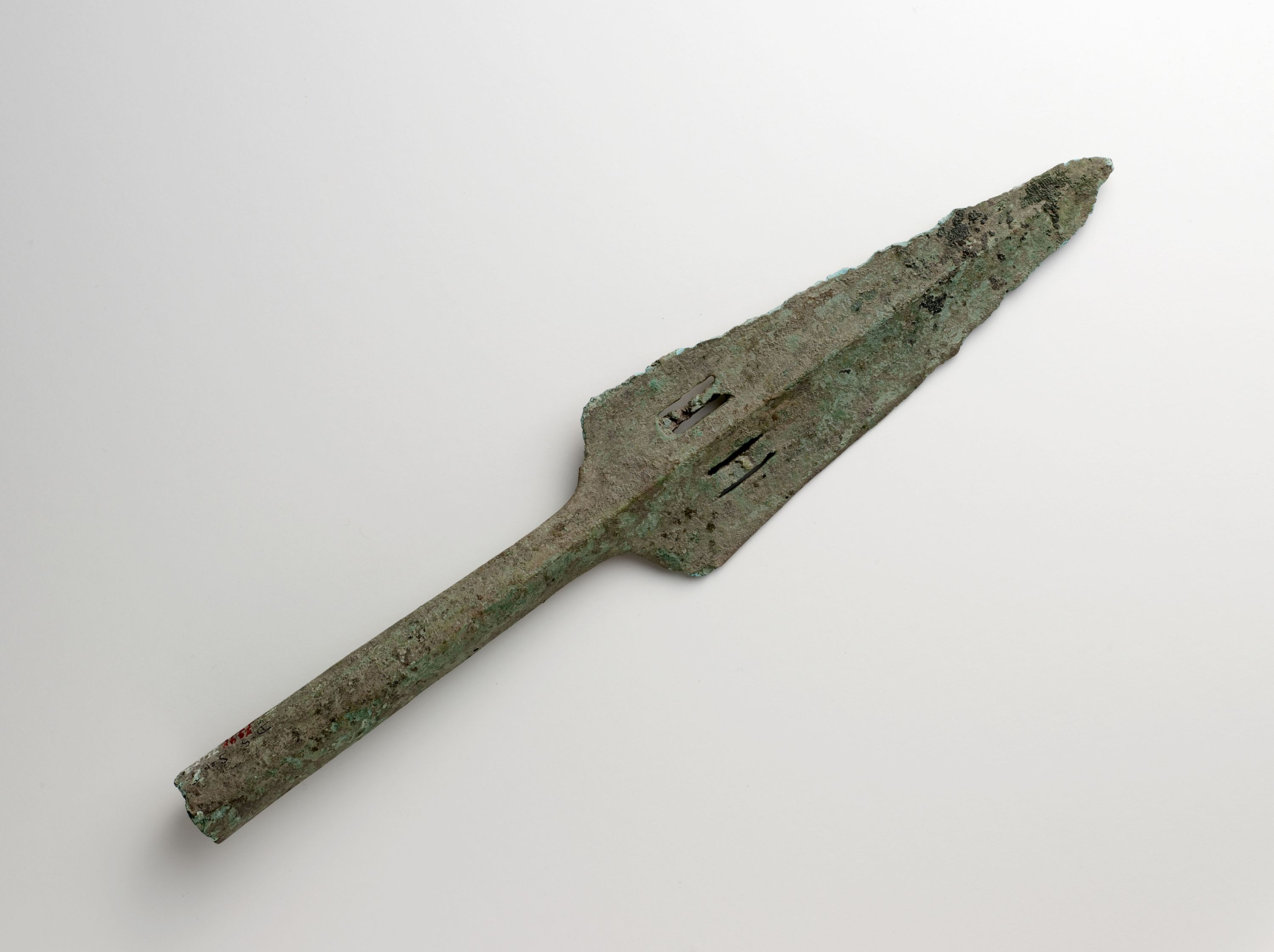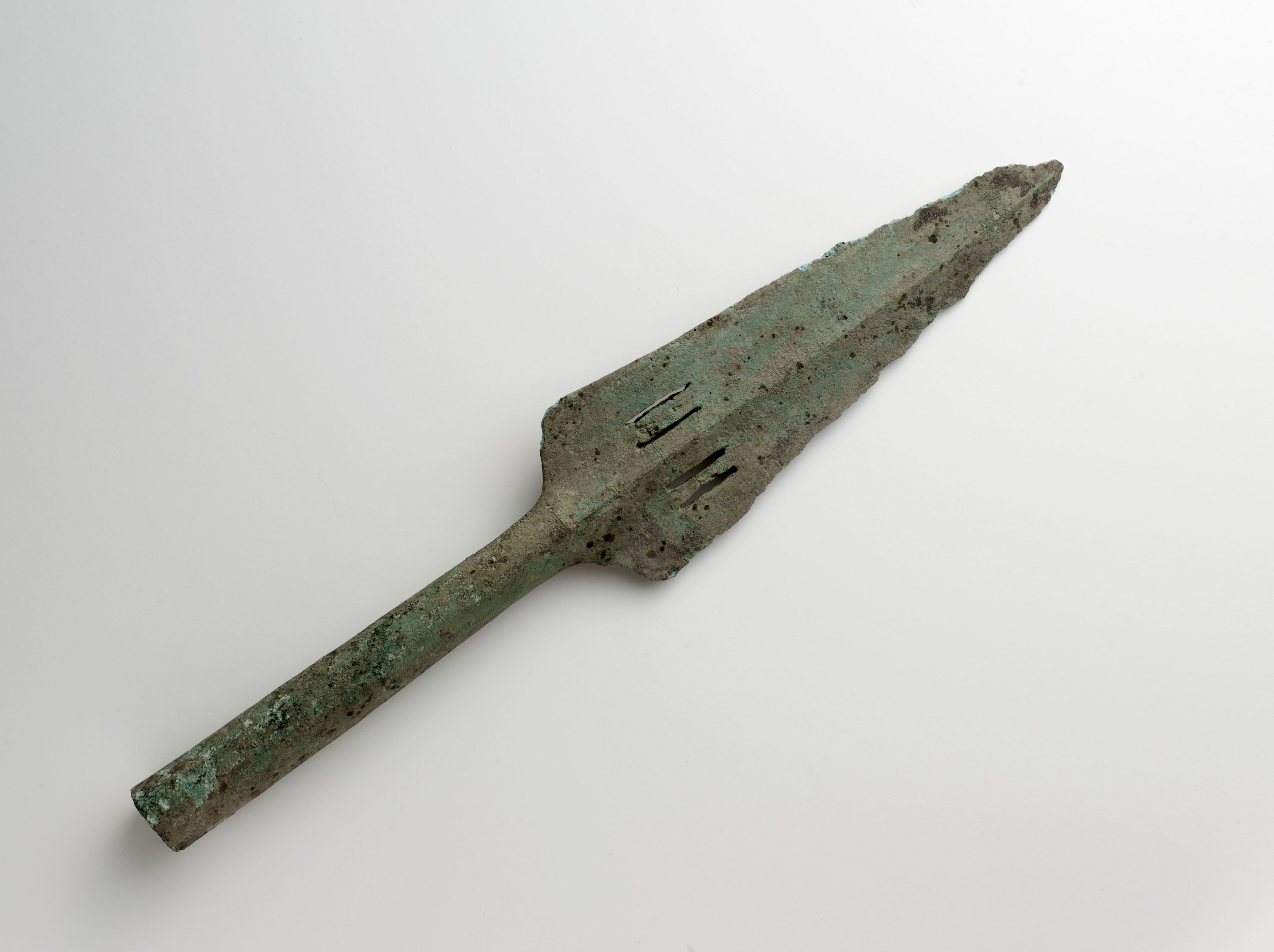
Pointe de lance
Bronze
Arme
D-S Sep.1
Don fouilles : Janse, Robert Ture Olov; Mission Janse Indochine (1934-1935)
M.C. 7998
Our knowledge of the Đông Sơn culture is limited to the funerary offerings placed next to a dead person’s body in the grave. These offerings were much more varied than the few objects that have come down to us, but Vietnam’s warm, humid climate and acidic soil have prevented the most fragile materials from being conserved.
A comparison of tombs richly endowed with funerary equipment and other much more simple ones reveal the marked hierarchy of Đông Sơn society. The tombs of high-ranking figures contained weapons such as daggers, swords, spears, halberds, arrowheads (the bows and arrows having probably disintegrated) and axes. Along with these weapons were other objects in bronze: vessels, bracelets, ornamental breastplates, handbells, cymbals and drums. The symbolism of earthly and perhaps spiritual power was closely linked to bronze and weaponry.
This spear-head with a triangular blade, long shaft socket and small slits on either side of the central spine is characteristic of the type of weapons that have been found in tombs of the Đông Sơn culture. Several hypotheses have been proposed to explain the presence of these slits. Perhaps the arrow and spear-heads were steeped in poison to make them more effective; the thick or sticky paste would have been inserted in these long slits. Or they may have been used to attach ribbons or feathers for greater effect at ritual ceremonies where the noble warriors would parade in their full finery.
